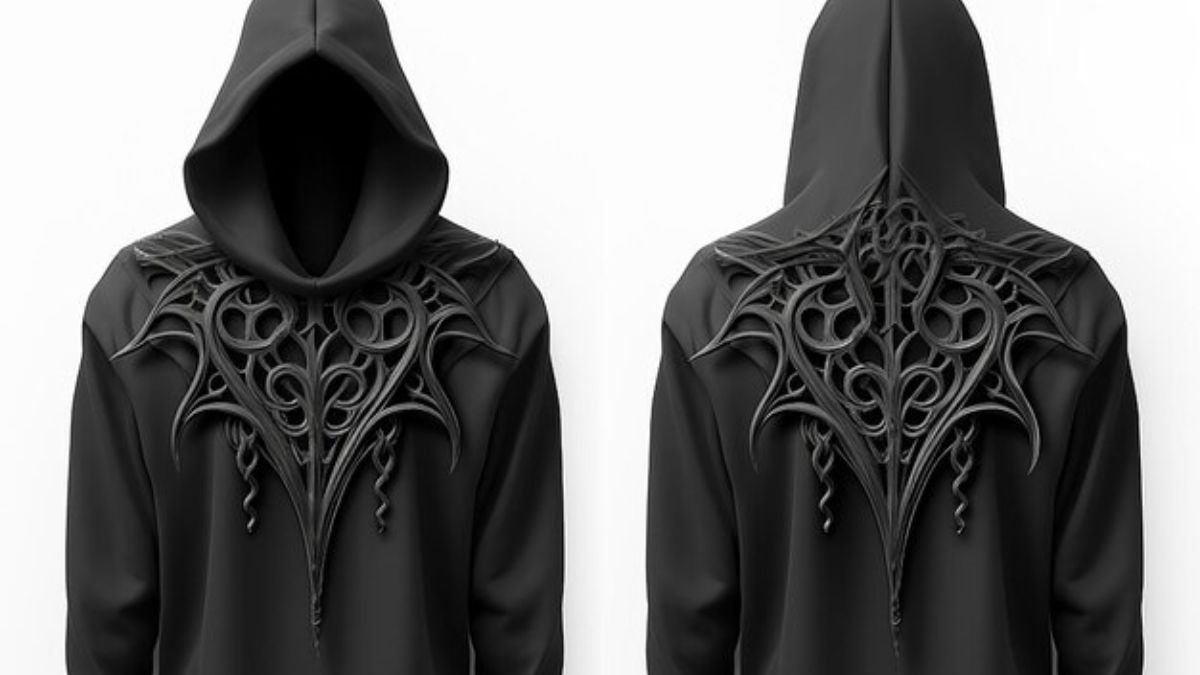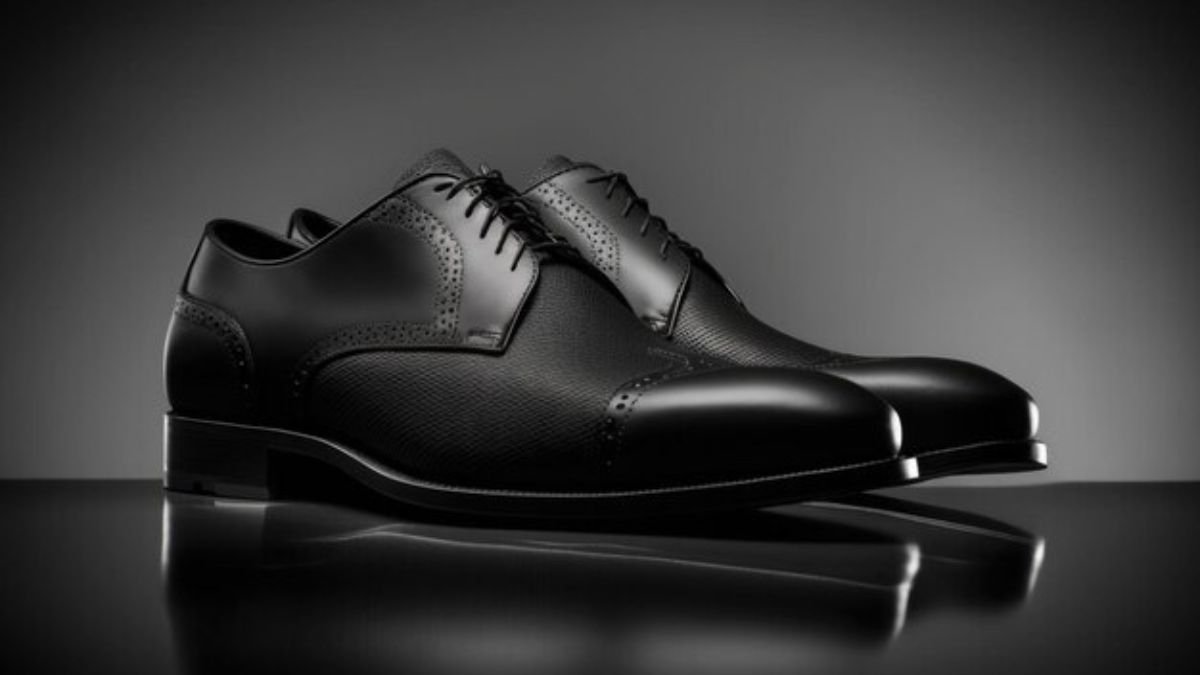Fashion
Business Casual: The Ultimate Guide to Modern Workplace Attire

Business casuals is a popular dress code in many workplaces, striking a balance between formal and casual attire. It offers professionals the opportunity to look polished and professional without the rigidity of a full suit. However, the term “business casuasl” can be confusing because it varies from one office environment to another. What’s acceptable in one company might be too casual or too formal in another.
In this comprehensive guide, we will define what business casual means, provide examples for both men and women, and offer tips on how to build a versatile business casual wardrobe. By the end, you’ll know exactly what to wear to feel confident and appropriate in any business casual setting.
What is Business Casual?
Business casual is a dress code that bridges the gap between formal business wear and casual attire. Unlike traditional business attire, which often requires suits and ties for men and formal skirts or pantsuits for women, business casual allows for more comfort and flexibility. However, it still requires a neat, polished appearance.
Business casuals can vary based on the industry, company culture, and even geography. For example, tech companies may have a more relaxed approach to business casual, while law firms may lean toward the formal side of the spectrum. Understanding your workplace’s specific take on business casual is crucial to dressing appropriately.
Key Characteristics of Business Casual
- Neat and polished: Clothes should be well-fitted, clean, and free of wrinkles.
- No overly casual items: Avoid items like ripped jeans, T-shirts, and flip-flops.
- Balanced style: Combine elements of formal attire (like button-down shirts or blouses) with more casual pieces (such as khakis or skirts).
Business Casual for Men
Essential Business Casual Pieces
Building a business casuals wardrobe for men starts with a few essential pieces. Here are the staples:
- Button-Down Shirts: Opt for solid colors, subtle patterns, or classic checks. Stick to colors like white, light blue, and pastels.
- Polo Shirts: Ideal for warmer days, polo shirts provide a comfortable yet professional look.
- Sweaters and Cardigans: These can be layered over shirts to add a touch of style and warmth.
- Chinos or Khakis: Go for neutral shades like navy, beige, or gray. They are more comfortable than dress pants but still look professional.
- Blazers: Adding a blazer can elevate a simple outfit, making it appropriate for client meetings or presentations.
- Loafers or Dress Shoes: Shoes should be clean and polished, sticking to classic styles.
Dos and Don’ts for Men
Dos:
- Do wear well-fitted clothes: Clothes that are too baggy or too tight can look unprofessional.
- Do stick to neutral and subtle colors: They are easier to mix and match.
- Do add accessories: A watch or a belt can make an outfit look more put-together.
Don’ts:
- Don’t wear athletic shoes or sandals: These are too casual for a business casual setting.
- Don’t wear graphic T-shirts or overly bold patterns: Stick to classic, simple designs.
- Don’t forget grooming: Hair, beard, and nails should be neatly maintained.
Business Casual for Women
Essential Business Casual Pieces
For women, business casuals attire can vary, but certain pieces are essential for building a versatile wardrobe:
- Blouses and Button-Down Shirts: Choose solid colors, soft prints, and classic stripes. Avoid anything too sheer or revealing.
- Knit Tops and Sweaters: Comfortable yet stylish, knit tops and sweaters are perfect for layering.
- Pencil Skirts and A-Line Skirts: Skirts should be knee-length or longer and fit comfortably.
- Dress Pants and Slacks: Look for tailored pants in colors like black, navy, or gray. Cropped pants can also work if styled correctly.
- Dresses: Simple, knee-length dresses in classic cuts can be a great one-piece solution.
- Closed-Toe Flats, Loafers, or Low Heels: Comfortable yet polished shoes are key for business casual. Stick to neutral tones for versatility.
Dos and Don’ts for Women
Dos:
- Do choose breathable fabrics: Fabrics like cotton, linen, and silk blends are comfortable for long days.
- Do accessorize wisely: A tasteful necklace or scarf can add personality to your outfit.
- Do keep makeup minimal and polished: Opt for natural, neutral tones for a professional look.
Don’ts:
- Don’t wear overly casual footwear: Flip-flops, sneakers, and high stilettos are usually not suitable.
- Don’t wear very short skirts or low-cut tops: Business casual still requires modesty.
- Don’t overdo patterns or colors: Subtle patterns and neutral colors are safer and easier to coordinate.
Tips for Building a Business Casual Wardrobe
Creating a business casual wardrobe doesn’t have to be expensive or complicated. Here are some tips:
- Start with the basics: Invest in a few high-quality essentials, like dress shirts, pants, and a blazer. These can be mixed and matched to create multiple outfits.
- Stick to neutral colors: Neutral colors like black, white, navy, gray, and beige are easy to pair and appropriate for almost any business casual setting.
- Layer strategically: Blazers, sweaters, and cardigans allow you to adjust your outfit based on the office temperature and make your look more versatile.
- Invest in good shoes: A great pair of loafers or flats can make even simple outfits look more polished.
Common Business Casual Mistakes to Avoid
While business and casuals offers more flexibility than traditional business attire, there are still some common mistakes to avoid:
- Wearing overly casual items: Items like jeans, T-shirts, and athletic wear are typically not appropriate. Even in more relaxed business casual environments, opt for tailored pieces.
- Ignoring the fit of your clothes: Ill-fitting clothes, whether too tight or too loose, can make you look unprofessional.
- Over-accessorizing: Keep accessories minimal. Overly flashy jewelry, bright patterns, and bold colors can be distracting in a business setting.
- Forgetting grooming and hygiene: Clean, well-maintained attire is key. Make sure your clothes are ironed, your shoes are polished, and personal hygiene is up to standard.
Conclusion
Business and casuals is an adaptable dress code that combines professionalism with comfort. Whether you’re dressing for a corporate office, a startup, or a client meeting, understanding the basics of business casual attire can help you feel confident and appropriate. By building a wardrobe with essential pieces, paying attention to fit and grooming, and avoiding common mistakes, you can master the business casual look and make a great impression in any professional setting.
FAQs
What is considered business casuals attire?
Business and casuals attire includes items like button-down shirts, blouses, dress pants, skirts, blazers, and loafers. It’s a step down from formal business wear but still requires a polished and professional appearance.
Can I wear jeans in a business casuals setting?
It depends on the company culture. In some workplaces, dark, well-fitted jeans may be acceptable, but in more traditional offices, they are typically not considered business and casuals.
Are sneakers business and casuals?
Sneakers are usually too casual for a business casuals dress code. Opt for shoes like loafers, flats, or dress shoes instead.
What should women avoid in business and casuals attire?
Women should avoid short skirts, low-cut tops, flip-flops, and overly casual items like graphic T-shirts. Aim for a polished, modest, and neat look.
Do I need to wear a tie for business and casuals?
Ties are optional in a business casuals setting. If you want to dress up your look, you can add a tie, but it’s not a requirement.
Fashion
The Ultimate Guide to Black Dress Shoes: Style, Types, and Tips
Fashion
Hellstar Hoodie: The Ultimate Guide to the Trendiest Streetwear Essential

FAQs
Fashion
How to Wear a Bolo Tie: A Style Guide for Beginners

The bolo tie has evolved from a traditional Southwestern accessory into a versatile and stylish addition to various outfits. Whether you’re dressing up for a formal event or adding flair to a casual ensemble, this guide will teach you how to wear a bolo tie with confidence and style.
What is a Bolo Tie?
Origins of the Bolo Tie
The bolo tie originated in the American Southwest, particularly among Native American tribes and Western cultures. It’s typically made with a cord fastened by a decorative clasp or slide and often features unique ornaments, from turquoise stones to metal designs.
Why Wear a Bolo Tie?
Bolo ties are a unique fashion statement, often representing a blend of rustic and modern styles. Their versatility allows them to be worn for both formal and casual occasions, making them an accessory with a story and a unique look.
Choosing the Right Bolo Tie
Material and Design
When selecting a bolo tie, consider the material, design, and ornament style. Some popular materials include:
- Leather cords for a traditional look
- Metal tips to add an elegant touch
- Stone or gem ornaments, such as turquoise, for a Southwestern feel
Matching the Style to the Occasion
- Formal events:
- Opt for bolo ties with silver or gemstone ornaments. Black or dark leather cords are ideal for a classic look.
- Casual settings:
- Bolo ties with colorful stones or unique designs can add a fun and creative touch to casual wear.
How to Wear a Bolo Tie with Different Outfits
Bolo Tie with a Button-Up Shirt
Wearing a bolo tie with a button-up shirt is a classic approach. Follow these steps:
- Button up the shirt completely, including the collar.
- Slide the bolo tie clasp up to the top, positioning it snugly beneath the collar.
- Keep the cords even on both sides for a balanced look.
This style works well with both plain and patterned shirts, adding sophistication to the outfit.
Bolo Tie with a T-Shirt
For a laid-back style, pair your bolo tie with a T-shirt:
- Choose a solid color or graphic T-shirt for contrast.
- Let the bolo tie hang loosely, without adjusting the clasp too high.
- Adjust the clasp slightly below the chest for a casual look.
This approach provides a relaxed vibe and can be a conversation starter in social settings.
Bolo Tie with a Suit
- Select a dark suit for a more formal appearance or a lighter suit for a daytime look.
- Pair it with a white or light-colored shirt.
- Fasten the bolo tie high for a formal setting or leave it slightly lower for a more relaxed look.
Bolo Tie with Western Outfit
The bolo tie naturally complements Western-inspired outfits:
- Pair it with a denim or plaid shirt.
- Complete the look with jeans or a denim jacket.
- Slide the bolo tie up to your collar for an authentic Western style.
Western outfits often emphasize rugged charm, and a bolo tie perfectly enhances this aesthetic.
Tips for Styling Bolo Ties
Adjusting the Length
The placement of the bolo tie clasp can change the tone of your outfit:
- High up:
- Creates a formal, polished look.
- Mid-chest:
- Offers a balanced, semi-casual style.
- Low down:
- Gives a laid-back and effortless appearance.
Experiment with different lengths based on the outfit and occasion.
Matching Accessories
Consider other accessories to complete your look:
- Rings or bracelets in silver or turquoise for a cohesive Southwestern style.
- Belts with matching metal buckles to complement the bolo tie ornament.
Accessories can enhance the bolo tie’s visual impact without overwhelming the outfit.
Choosing the Right Shoes
Your choice of shoes can also affect how a bolo tie is perceived:
- For formal wear, pair bolo ties with leather dress shoes.
- For a casual look, boots or loafers offer a stylish yet relaxed appeal.
- In a Western setting, cowboy boots naturally complement the bolo tie.
Do’s and Don’ts of Wearing a Bolo Tie
Do’s
- Experiment with different placements to find what looks best on you.
- Keep the outfit balanced – bolo ties make a statement, so avoid over-accessorizing.
- Pair bolo ties with collared shirts for a polished look.
Don’ts
- Avoid wearing bolo ties with turtlenecks or non-collared shirts, as they clash with the accessory’s design.
- Don’t let the bolo tie cords dangle unevenly, as this creates a messy appearance.
Conclusion
The bolo tie is more than an accessory; it’s a style statement. By following this guide, you can incorporate a bolo tie into various outfits, from casual to formal, while showcasing your personal style. Embrace its unique look, experiment with different outfits, and enjoy the versatility of this timeless accessory.
FAQs
Can a Bolo Tie Be Worn Casually?
Yes, bolo ties work well for casual occasions, especially when paired with T-shirts or casual button-up shirts. Adjust the clasp lower on your chest for a relaxed look.
Are Bolo Ties Acceptable for Formal Events?
Absolutely. Bolo ties can replace traditional ties in formal settings, especially when styled with a suit or blazer. Choose a sophisticated design, such as one with a silver ornament, for a formal occasion.
How Should a Bolo Tie Fit?
The bolo tie should fit comfortably around your neck. Slide the clasp up or down to adjust its position. Avoid positioning it too tightly against your neck.
Are there traditional rules for wearing a bolo tie?
While there are no strict rules, bolo ties are traditionally associated with Western and Southwestern U.S. culture. They’re often worn with Western-style clothing but can be a stylish addition to many modern looks.
What types of shirts go well with a bolo tie?
Bolo ties work well with collared shirts, whether Western shirts, flannels, denim, or formal button-downs. For a more contemporary style, you can even pair a bolo tie with T-shirts or minimalist button-downs.
-

 TECHNOLOGY1 month ago
TECHNOLOGY1 month agoUnderstanding PHP ID 1: A Comprehensive Guide
-

 GENERAL1 month ago
GENERAL1 month agoSK 100W-MF2-35-1E1-1S10 / VPL-B1003: An In-Depth Look at a Powerful Lighting Solution
-

 LIFE STYLE1 month ago
LIFE STYLE1 month agoExploring Elise Maillet and the Rhône Valley
-

 LIFE STYLE1 month ago
LIFE STYLE1 month ago9236 Kitchin Wake Forest: A Deep Dive into a Unique Property from John the Diary in Rolesville
-

 GENERAL1 month ago
GENERAL1 month agoUnderstanding the Ratio: 324.48/125.3
-

 Uncategorized1 month ago
Uncategorized1 month agoThe Ultimate Guide to Home Labs: Setting Up Your Personal Space for Learning and Experimentation
-

 TECHNOLOGY1 month ago
TECHNOLOGY1 month ago2016 Berkshire 34QB for Sale: A Comprehensive Review
-

 Uncategorized1 month ago
Uncategorized1 month agoStudies in Boy-Love: O. Brunoz and Alex Oriani





